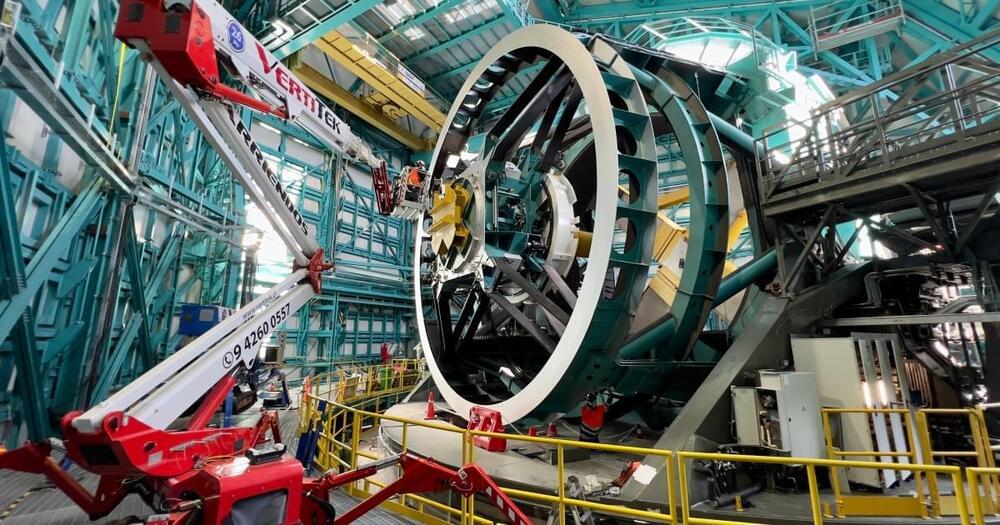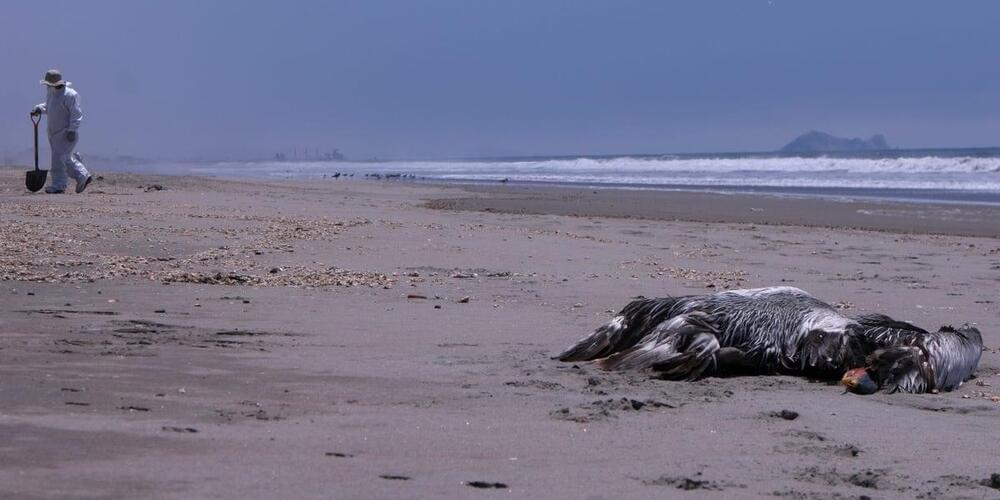Page 2737
Apr 24, 2023
A new wake-up receiver could help preserve the battery life of tiny sensors
Posted by Genevieve Klien in categories: electronics, energy
Scientists demonstrate a low-power “wake-up” receiver one-tenth the size of other devices.
Apr 24, 2023
Trillions of Miles Away — Distant Supernovae May Impact the Diversity of Life on Earth
Posted by Genevieve Klien in categories: biological, evolution, habitats, space, sustainability
A new study published in Ecology and Evolution by Henrik Svensmark of DTU Space has shown that the explosion of stars, also known as supernovae, has greatly impacted the diversity of marine life over the past 500 million years.
The fossil record has been extensively studied, revealing significant variations in the diversity of life forms throughout geological history. A fundamental question in evolutionary biology is identifying the processes responsible for these fluctuations.
The new research uncovers a surprising finding: the fluctuation in the number of nearby supernovae closely corresponds to changes in biodiversity of marine genera over the last 500 million years. This correlation becomes apparent when the marine diversity curve is adjusted to account for changes in shallow coastal marine regions, which are significant as they provide habitat for most marine life and offer new opportunities for evolution as they expand or shrink. Thus, alterations in available shallow marine regions play a role in shaping biodiversity.
Apr 24, 2023
Inside the Vera C. Rubin Observatory (and its giant camera)
Posted by Genevieve Klien in category: space
Next year, the world of astronomy is set to get even bigger with the first operations of the Vera C. Rubin Observatory. This mammoth observatory is currently under construction at the peak of Cerro Pachón, a nearly 9,000 feet-tall mountain in Chile.
Apr 24, 2023
The worst bird-flu outbreak in US history is ‘wiping out everything in numbers we’ve never seen before.’ Here’s what you need to know
Posted by Genevieve Klien in category: biotech/medical
The US is currently experiencing its worst-ever outbreak of bird flu, also known as avian influenza — and a new study has found that the strain could become endemic in the country.
The outbreak is “wiping out everything in numbers we’ve never seen before,” Jennifer Mullinax, an assistant professor of environmental science and technology at the University of Maryland, told Sky News. The new H5N1 strain has already killed over 58 million chickens, turkeys, and other birds, Reuters reported.
The US is no stranger to the impact of the disease, with the H5N8 strain having led to the culling of 50 million birds in 2015. But the new, more contagious strain is particularly affecting wild birds, Sky News reported.
Apr 24, 2023
How hybrid AI could enhance GPT-4 and GPT-5 and address LLM concerns
Posted by Genevieve Klien in categories: Elon Musk, robotics/AI
Join top executives in San Francisco on July 11–12, to hear how leaders are integrating and optimizing AI investments for success. Learn More
The explosion of new generative AI products and capabilities over the last several months — from ChatGPT to Bard and the many variations from others based on large language models (LLMs) — has driven an overheated hype cycle. In turn, this situation has led to a similarly expansive and passionate discussion about needed AI regulation.
The AI regulation firestorm was ignited by the Future of Life Institute open letter, now signed by thousands of AI researchers and concerned others. Some of the notable signees include Apple cofounder Steve Wozniak, SpaceX, Tesla and Twitter CEO Elon Musk; Stability AI CEO Emad Mostaque; Sapiens author Yuval Noah Harari; and Yoshua Bengio, founder of AI research institute Mila.
Apr 24, 2023
If Candida auris is drug-resistant, how do you kill it?
Posted by Genevieve Klien in categories: biotech/medical, health
(NEXSTAR) – A deadly fungus spreading in more than half of U.S. states is so concerning in part because of the way it has evolved to be resistant to both antimicrobial cleaning products and anti-fungal drugs, the Centers for Disease Control and Prevention recently warned.
The fungus, Candida auris or C. auris, has mainly spread in health care settings, like hospitals and nursing homes. Counterintuitively, because hospitals are disinfected so frequently, they can be the birthplace of bacteria or fungus that are resistant to cleaning products and to treatments.

The kardeshev scale of possible future technological advance.
In 1964, Russian astrophysicist Nikolai Kardashev figured that civilizations can be categorized by the total amount of energy available to them. He called it the Kardashev Scale. He initially came up with 3 civilization types; type 1, type 2, and type 3. However, other astronomers have recently extended the scale from type 0 all the way to type 7 as new theories in modern physics have emerged. Check out the complete playlist as we unveil each level of the Kardashev Scale! Enjoy the videos, and do let us know your thoughts in the comments!

The possible levels of information mastery in the future of technology.
This series focus will be on the Information Mastery version of the Kardashev scale. In his book, The Cosmic Connection, Carl Segan proposed an alternative approach to the Kardashev Scale. He added another dimension to the original scale in addition to the pure energy usage that was first used to characterize different civilizations. Sagan believed that the amount of information available to a civilization should be an important criterion when trying to come up with a useful metric to measure different types of civilizations. So he assigned a lettered scale from A-Z where each letter meant an order of magnitude increase in the volume of information a civilization can hold. This information, he proposed, could be described in terms of bits, the number of yes or no statements concerning different civilizations, and the universe that such civilizations occupy.
Apr 24, 2023
Superintelligence: Collective Superintelligence
Posted by Dan Breeden in category: space travel

Last time, we talked about the concept of Speed Superintelligence as proposed by philosopher Nick Bostrom at the University of Oxford. If you haven’t seen the previous videos on this topic, do check them out, the link is in the description below. Today, we will be looking at a different kind of superintelligence known as Collective Superintelligence and some of its defining characteristics!
A collective superintelligence according to Bostrom is a form of superintelligence that is a system achieving superior performance by aggregating large numbers of smaller intelligences. So, he formally defines collective superintelligence as “a system composed of a large number of smaller intellects such that the system’s overall performance across many very general domains vastly outstrips that of any current cognitive system.” Now, Collective superintelligence may be less conceptually clear-cut than speed superintelligence, however, it is more familiar empirically. For example, firms, work teams, academic communities, countries, and even humankind as a whole, can fall under collective superintelligence. Since these loosely defined “systems” are capable of solving classes of intellectual problems by breaking them into parts that can be pursued in parallel and verified independently. Tasks like building a space shuttle or operating a hamburger franchise offer many opportunities for division of labor: different engineers work on different components of the spacecraft, and different staff members operate different restaurants for the smooth operation of the whole franchise.















